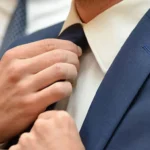Mastering Hand Sewing Techniques

Embarking on a sewing journey opens up a world of creativity and craftsmanship. Whether you are using a sewing machine or opting for the simplicity of hand sewing, understanding essential techniques is crucial. In this comprehensive guide, we will explore the art of hand sewing strong seams while incorporating essential machine sewing elements.
What’s the Best Hand Stitch for Seams?
Running Stitch
The running stitch, a fundamental hand sewing technique, is versatile and quick. This stitch creates straight lines suitable for basic seams, making it an excellent choice for both hand and machine sewing.
Whip Stitch
Ideal for joining pieces of fabric, the whip stitch is a common choice for hand-sewn seams. Its visible ridge adds a decorative touch and ensures a secure bond between fabric layers.
Backstitch
For a durable and robust seam, the backstitch reigns supreme. This stitch involves overlapping each previous stitch, creating a strong and flexible connection between fabric pieces.
Supplies: What You Need for Hand and Machine Sewing

Before you begin, gather the following supplies:
- Sewing machine (for machine sewing)
- Sewing needle
- Thread (preferably durable cotton)
- Sharp scissors
- Fabric pieces
- Pins
- Fabric marking pen
How to Start Hand Sewing (Preparation)
1. Thread Your Needle
Choose a needle suitable for your fabric and thread it, ensuring a length about as long as your forearm. Consider using needle threaders to simplify the process.
2. Double Knot the End of Your Thread
Start with a secure foundation by creating a double knot at the end of your thread. This prevents the thread from slipping through the fabric during sewing.
3. Mark Your Stitch Line
Use a fabric marking pen to draw a straight line along your intended stitching path. This guideline helps maintain uniform stitches.
4. Pin the Fabric Layers Together
Secure the layers of fabric with pins along the marked stitch line. This prevents fabric shifting during the sewing process.
How to Hand Sew a Strong Seam Using a Backstitch

Half Backstitch Method
- Begin with a single straight stitch, pulling the needle up from the underside of the fabric.
- Insert the needle back into the fabric, bringing it to the end of the previous stitch instead of moving forward.
- Repeat, ensuring each stitch overlaps with the previous one for a tight and secure seam.
Tips for Hand and Machine Sewing
- Adjust machine settings for different fabrics and seam allowances.
- Use a basting stitch to temporarily hold fabric layers together before permanent stitching.
- Experiment with common stitches, such as diagonal stitches, to add decorative elements to your projects.
How to Finish & Secure Your Sewing
Method 1: Slip Stitch (Hand Sewing)
The slip stitch, or invisible stitch, is perfect for finishing hand-sewn seams. It leaves no visible thread on the outside of the fabric.
Method 2: Whip Stitch (Hand Sewing)
For a decorative edge, finish your seam with a whip stitch. This method adds a unique touch to your sewing project.
Seam Allowances and Machine Sewing
When using a sewing machine, pay attention to seam allowances. Adjust the machine settings accordingly to achieve the desired seam width.
Conclusion
Whether you’re exploring basic hand stitches or delving into the intricacies of machine sewing, understanding these techniques opens up a myriad of creative possibilities. Whether you’re working on a larger sewing project or a quick mend, adapt your stitches to the fabric type and project requirements for optimal results
FAQs
Both hand sewing and machine sewing have their advantages. Hand sewing allows for more control and precision, making it ideal for beginners. However, a sewing machine can be faster and is essential for larger projects.
Durable cotton thread is generally preferred for hand sewing. It offers strength and versatility, making it suitable for various fabrics and projects.
Select a needle based on your fabric type and thickness. For example, use a finer needle for delicate fabrics and a thicker needle for heavier materials.
Yes, many basic stitches, such as the running stitch or backstitch, can be used for both hand and machine sewing. However, some stitches are specific to each method.
Seam allowances provide space between the stitching line and the fabric edge, allowing for adjustments and preventing fraying. Measure them using a ruler, following the pattern instructions or your project requirements.
Secure hand-sewn stitches by tying a double knot at the end of the thread or using a backstitch to lock the stitches in place.



GIPHY App Key not set. Please check settings